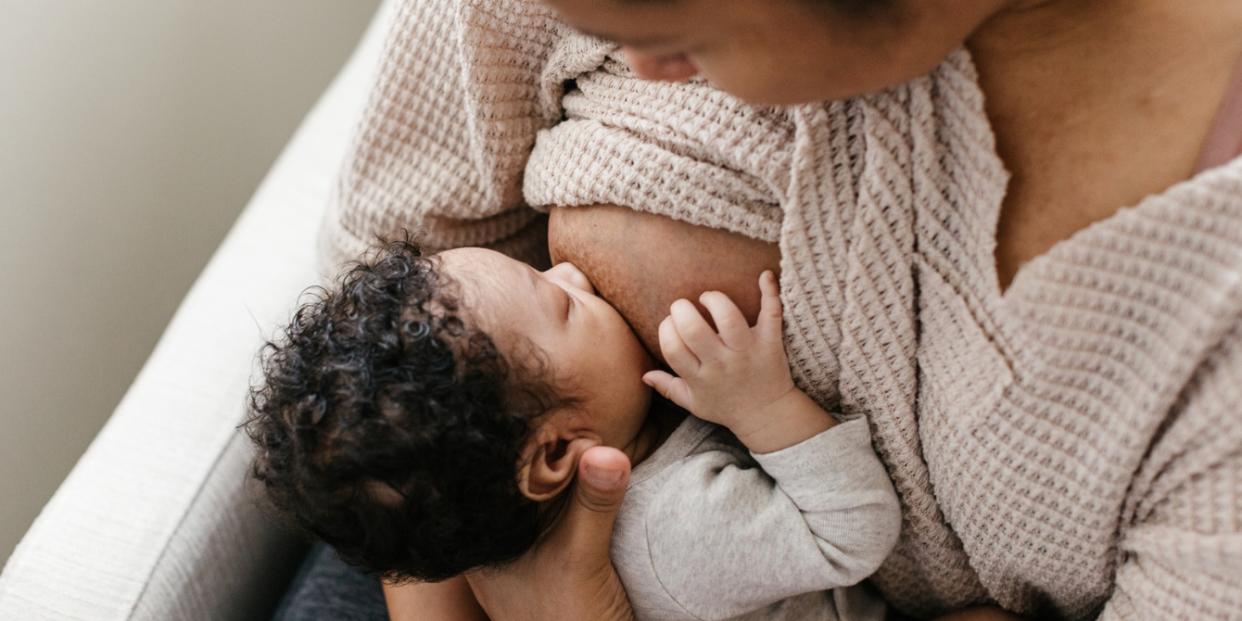Can breastfeeding protect you against a future heart attack?

Despite all of humanity’s advances in science and medicine, there is no manmade substitute that can fully replace the benefits of human milk for our young. From brain development to the prevention of ear infections and diseases such as type 2 diabetes, human breast milk truly provides our children with a great start.
But what happens to a woman’s body when she can’t breastfeed or opts not to? A better question may be: After all the prep work the body does to ready itself to feed its newborn, where does all that human milk go?
Breast milk does not just develop when the newborn arrives. The breast and the human body are preparing well before the delivery. So if a woman gives birth and then either cannot or chooses not to breastfeed, what happens to the cholesterol-rich and fat-rich milk her body has been creating?
The answer may seem obvious, but it is rarely talked about: It ends up being absorbed back into her body. Unfortunately, all that naturally made creamy goodness was not designed to provide the same benefits for a woman’s body as for a baby’s developing body. It was meant to be released. Kept in a woman’s body, it is akin to storing sticks of butter, cartons of cream and bowls of ice cream in the body.
Breastfeeding and heart health
Women breastfeed to nourish and bond with their babies. Some breastfeed because they know it decreases their risk of breast cancer and ovarian cancer. But when considering the impact of breastfeeding on their own health, more women should be aware that the number one killer of American women is not breast cancer or ovarian cancer, but it is cardiovascular disease.
In most cases, neither the healthcare provider, the news, nor social media inform women that breastfeeding protects them from this health risk as well. According to the Centers of Disease Control and Prevention (CDC), 60 million US women (44%) are living with some form of cardiovascular disease. Cardiovascular disease, or heart disease, is responsible for the death of 1 in 5 US women. Yet only 56% of US women recognize that heart disease is our number one killer.
So how then can breastfeeding, an activity completed years before women are even thinking about their risks from high blood pressure, high cholesterol and heart attacks, reduce this risk? One way to think about this protection is that breastfeeding is not just something women can do for their infants; it is an activity that is actually part of the healing process after childbirth, preparing their bodies for the rest of life.
The activity of breastfeeding causes the body to lower its store of triglycerides and LDL (the body’s “bad” cholesterol)—while simultaneously reducing insulin resistance, increasing HDL (the body’s “good” cholesterol)—and promoting vascular changes that reduce the risk of high blood pressure.
A growing body of scientific evidence shows that all women, regardless of their pre-pregnancy diet, level of exercise, weight or smoking history, etc., receive these benefits from breastfeeding. Moreover, the more we study the benefits of breastfeeding the more we find that periods of breastfeeding as short as 3 months provide some of these benefits. Even partial breastfeeding (breastfeeding while providing children with solid food) has also been shown to provide cardiovascular benefits to mothers.
The protective advantage of breastfeeding exceeds the advantages of diet and exercise after pregnancy in women who don’t breastfeed. While the benefits are strongest in women who breastfeed exclusively for 12 months, the significant cardiovascular benefit to women who breastfeed for shorter amounts of time is extremely important to recognize.
Projective data demonstrate that if the US were able to support women in overcoming the numerous and individual obstacles to breastfeeding and increase the percentage of women who breastfeed from 20% to 90%, the cardiovascular benefits are staggering. Experimental calculations show that if 90% of women breastfeed for one year, we could reduce the number of heart attacks among women by 14,000 per year and reduce the number of women needing to utilize daily blood pressure medication by 54,000 women per year.
Breastfeeding is healthcare
If breastfeeding can be considered healthcare, then it needs to be viewed as a right of the mother. One way to best promote her immediate and long-term health is by breastfeeding. Supporting all breastfeeding individuals not only supports a healthy community but forces healthcare and the community to address the inequalities that are obstacles for women and especially, women of color and low-income women. According to the Academy of Breastfeeding Medicine Position Statement: Breastfeeding As a Basic Human Right (2022):
Public policies and laws should be established so that mothers can choose to breastfeed, be supported to breastfeed, and have their choice protected such that they are not denied their right either by laws, coercion, employment practices, or society.
In this vein, women can promote their own health by asking about the benefits and risks of breastfeeding for their individual situation. They can recognize that breastfeeding is as much about them as it is about the newborn. Supporting breastfeeding supports a woman’s full and equal access to the benefits of healthcare and yes: breastfeeding helps a woman’s heart.

